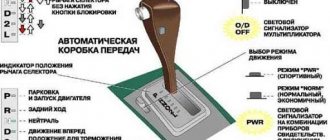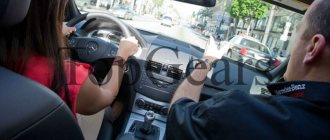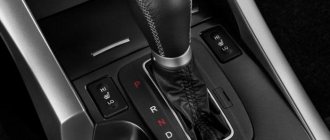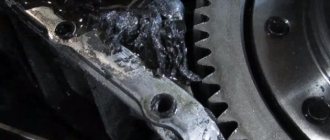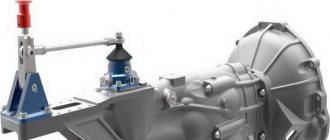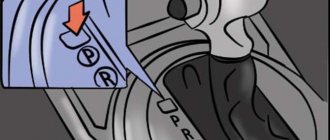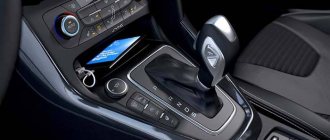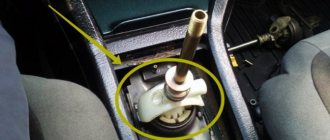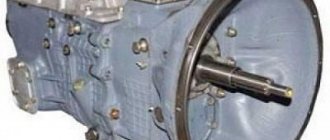Pedals are a very important element of driving a car. Because thanks to them, the car starts moving, stops and slows down, and regulates the speed of the car. A beginner and even an experienced driver need to get used to the place where they are located.
So, when driving a car for the first time, every driver will definitely find a comfortable seating position by adjusting the driver’s seat. Due to varying heights as well as seating preferences, this must be done before moving.
In many ways, the convenience of the driving position influences both premature fatigue and the comfort of the trip in general.
Features of a manual transmission
A manual transmission is a type of transmission in which the gears are switched and torque is transmitted manually by the driver by selecting a gear, according to an assessment of current conditions and the characteristics of further actions.
In simpler terms, the purpose of a manual transmission is to regulate the speed range and select its direction.
The number of stages in a manual transmission ranges from four to seven, in addition to neutral and rear.
A special feature of vehicles with manual transmission is the presence of a clutch pedal, in addition to the brake and gas pedals, which are available in all types of transport. The gear change is carried out with the clutch pedal depressed.
Advantages of transport with manual transmission:
- inexpensive repairs and easy maintenance;
- high reliability;
- sufficient range of driving options;
- the ability to tow vehicles any distance;
- starting the car from the “pusher”;
- improved maneuverability in difficult conditions;
- increased dynamics and efficiency.
The disadvantages of manual transmission include:
- difficulty changing gears for a novice driver;
- inconvenience and increased fatigue when driving in traffic jams due to constant gear switching and clutch release;
- the risk of breakdowns of the manual transmission and clutch basket increases due to improper gear shifting and operation of the clutch;
- reduced engine life when traveling at fairly low or high speeds.
This is interesting: Is it possible to put a sticker on the windshield?
Three true friends
Now is the time to get acquainted with manual pedals. On the left is the clutch, in the middle is the brake, and on the right is the gas. I will say that this arrangement is the same for both right-hand drive and left-hand drive cars. Therefore, you will have to remember it once, even if you subsequently need to change to another car with a manual transmission.
In a manual car, the clutch is responsible for:
- smooth starting;
- disconnecting the engine from the gearbox;
- gear shift.
Make sure you fully depress the clutch. To do this, simply press on it with your left foot. You can only change gears when the clutch is fully depressed.
How did I do it? At first I pressed the pedals one at a time, then randomly, trying to remember and get used to their location. I pressed the gas and brake with my right foot alternately. At the very beginning, the main thing is to remember the correct location and not get confused.
Working with pedals
How to use the clutch pedal on a manual transmission? Try pressing the clutch to the floor and shifting the gearshift lever to one of the speed positions. Once you have engaged the gear, slowly release the pedal. No sudden jerks or sudden movements. I did this several times in a row until I remembered how I felt.
First of all, make sure that your car's brakes are working properly. Training on faulty brakes is a waste of time and will not yield any results. And learning to drive such a car is quite risky.
It is very important to remember and feel what the pedal should be, its hardness, in order to notice a malfunction in time. If she:
- Too soft and with a little pressure it suddenly sinks into the floor.
- Too hard when it takes a lot of force to apply the brake.
This indicates a malfunction. If you experience similar sensations when pressing, then this is a serious reason to contact a car service center. The brake pedal in a manual car is located in the center. To activate it, press it with your right foot. To brake, you must press the brake and clutch at the same time when you turn on the speed. From my own experience, I will say that the clutch must be pressed a certain fraction of a second faster than the brake.
The gas pedal is located on the right. By pressing or releasing it with your right foot, you give a command to the car's fuel system to increase or decrease the supply of the fuel mixture. As a result of such actions, your car will gain or lose speed. The harder you press the gas, the higher the speed will be. The video above describes everything in detail once again – it’s worth watching.
The location of the pedals on the “mechanics” can be seen in the photo above. So you will understand what's what. I am sure that after just a few lessons you will be able to easily drive your car.
New cars > Interesting and useful >
What pedals are there in the car, and what is the order in which they are located?
When choosing a car, buyers pay special attention to ergonomics and ease of driving. Controls include not only the steering wheel, but also the gearbox and the pedals used in the car. When placing pedals in a car, all automakers adhere to generally accepted standards.
It is also interesting that on identical machines their number may differ. This directly depends on which gearbox is provided in a particular configuration. On manuals there are more control levers, on cars with automatic transmission there are fewer of them, since the need for one of the pedals disappears.
The first cars were equipped exclusively with mechanical transmissions, which made it possible to control the behavior of the car and its speed. Drivers accustomed to manual transmissions note that the mechanics allow you to fully feel the car, thereby feeling like you are in charge.
Then came automatic transmissions. Working with them has become much easier. Yes, many may argue that mechanics are the basis, and only such a box makes it possible to get the most out of the car. Currently, it is not necessary to know how to operate a manual transmission if you buy a car with an automatic transmission.
What not to do with a manual transmission
A manual transmission is a reliable type of transmission, but improper operation can significantly reduce its service life and lead to significant damage.
What not to do with a manual transmission:
- engage reverse gear until the car comes to a complete stop (manual transmission failure);
- depress the clutch except for the moments necessary to change gears (increased wear of the release bearing and clutch occurs);
- keep your foot on the clutch pedal while driving (leads to increased wear on the clutch);
- select a high gear (3,4,5) when the speed and low revs are insufficient for this (increased load on the engine and gearbox);
- When stopping for more than 40 seconds, depress the clutch; select neutral gear (increased clutch wear);
- change gears without squeezing the clutch (manual transmission failure);
- constantly keep your hand on the gearshift lever (increased wear of various gearbox mechanisms);
- incomplete clutch release when changing gears;
- dropping the clutch.
If you follow some rules and drive thoughtfully, the experience of driving a car with a manual transmission will come quickly, despite the apparent complexity of such a transmission.
The main advantage of a car with a manual transmission is complete control over it, which is realized only after driving kilometers.
SOME ADDITIONS
If today you have your first lesson in driving a car, then some items of mandatory actions in preparation for starting and stopping the car can be excluded.
For example, when starting a car for the first time in your life, clicking turn signals can be very distracting, and you will only drive three meters in an area free from other cars.
During your first car driving lessons, when driving at low speed (no more than 20-30 km/h), it is better to use the stopping sequence suggested here (first the clutch, then the brake). If you swap points 4 and 5, the car will jerk, the engine will stall, and you will get nervous.
Later, when performing exercises that require movement at medium or higher speeds, the sequence of these actions will need to be fine-tuned (first the brake, then the clutch). As you gain driving skills, when driving at different speeds, you will have to use both options depending on the specific situation.
Or why do you need a handbrake today if the car is on a completely horizontal surface. However, you can exclude anything from the sequence of actions only if there is an experienced assistant next to you who sees and understands the situation around the car.
Don't be distracted from the road by trifles! Get used to the fact that your arms and legs will do all the necessary work themselves. Start trusting them. However, at first, still focus on your legs. Just under no circumstances should you look at them! After all, there is nothing new there, there are just your feet!
This instructor in the prime of life may be interested in looking at the legs of a young violator of our agreement on the form of clothing, but your eyes have nothing to do there. We already agreed on this during the conversation about hands on the steering wheel and on the gearshift lever, but it’s worth reminding. Let's formulate a final rule on this topic.
• Everything that is located below the horizontal axis passing through the middle of the steering wheel is a zone closed to the driver’s view. Operate the pedals, change gears, turn the headlights on and off, use the handbrake, and so on - you must be able to do all this blindly!
And what can you see, for example, at night in a dark car interior? Therefore, from the very first lesson, learn to look not at your arms and legs, but at the road. Otherwise, a seemingly harmless mistake can develop into a dangerous habit.
The location of the pedals in the car
First you need to decide what kind of gearbox cars come with.
There are two types:
- with manual transmission,
- with automatic gear shift mechanism.
The tasks of both devices are similar - changing gears. But in the first case this is done by the driver, and in the second it happens without the participation of the driver. What does this have to do with such a control as pedals? The most direct. Depending on the gearbox installed in the car, there may be three or two.
So, in the case of a mechanical gear selector, there will be three pedals. In the case of an automatic transmission - two. The pedal assembly is located on the left at foot level under the instrument panel and steering wheel.
The manual transmission comes with the following pedals:
- Clutch (located on the far left).
- Brakes (located between the clutch pedal and the gas (accelerator) pedal.
- Gaza (which is located on the far right).
With an automatic transmission the following pedals are located:
- Accelerator (located on the far right).
- Brakes (located to the left of the gas pedal).
It is important to remember that traditionally the brake pedal is located a little closer to the driver and appears to be protruding. The gas pedal is opposite, always slightly recessed towards the engine compartment. This was done for the intuitive convenience of perceiving their location.
In a car with a manual transmission, the brake and gas pedals are located to the right of the steering column, and the clutch pedal is to the left of it. At the same time, in a car with an automatic transmission, the brake and gas pedal are located to the right of the steering column, as in a car with a manual transmission.
In place of the clutch pedal there is a footrest. As a design feature, some vehicles intended for sale in the North American market may have a parking brake pedal to the left of the footrest.
This is interesting: How to enable auto start on a Starline alarm
How are the pedals located in a car with an automatic transmission?
The location of the pedals in a car with an automatic transmission
On a car with an automatic transmission (automatic) there is no clutch pedal; the brake and gas pedals are located in the same way as on a manual transmission, but for convenience the brake pedal is larger. The limit switch located on the brake pedal of an automatic transmission is somewhat more complicated - it serves not only to turn on the brake lights, information about the impact on the pedal is also transmitted to the engine ECU and ABS, as well as to various other active safety systems (for example ,ESP).
Engine starting is blocked if the brake pedal is not pressed on a car with an automatic transmission. Starting off, compared to the “mechanics”, is simplified - just move the selector to the “D” or “R” position (for reversing) and release the brake pedal. When starting uphill, you can simply press the gas a little harder. In any case, the car will not roll back, it will simply not move forward if the rolling resistance is slightly higher than a certain value
A comfortable seating position for the driver is also important – so that operating the pedals does not cause inconvenience. In addition, it is advisable to adjust the pedals so that they are at the same height
Don’t forget about safety - sometimes a mineral water bottle that rolled under the pedals caused an accident
Also, carefully choose interior mats - their pattern can “cling” to your shoes, which will irritate and distract attention. The same applies if chewing gum or grease gets on the surface of the pedals.
As they say, “there are no trifles in technology.”
Balance
Previously, you and I agreed that any of your actions should be separated from another by no less than two to three seconds. Today this agreement remains in force. But as you gain experience communicating with the machine, you should strive to reduce the “time gap” - first to a controlled one second, and later to reduce the delay to zero.
And this applies to your legs first of all. A good driver, of course, does not divide the work of the gas and clutch pedals into two separate actions; he does them simultaneously. To achieve this, as already mentioned, you need to work with your consciousness. We need to sort of split it into two. One part of you is working on one pedal, while the other part of you is working on the other pedal.
“What is our book about, about yogis, or what?” you can hear a remark from someone who has not yet understood that the author is trying to teach the future driver to understand, feel the car, and then confidently drive it on any roads. “I would like each of our drivers to have the attitude and abilities of a yogi!
The modern pace of life does not allow the driver to be slow, absent-minded and inaccurate in his actions. Yes, there are such drivers, but they are the ones who do not leave the “tinsmiths” of the car service center without work. You and I will take a different path: not immediately, but we will definitely achieve a feeling of unity with our car.
And yet let's return to the feet. At a certain stage of learning the science of driving a car (at what lesson, I don’t know - it depends on you), you must learn to do a “balance”.
• use your right foot to maintain reasonable revolutions of the engine crankshaft; • use your left foot to hold two clutch discs in the area of their first contact (Fig. 15 and 16. pos. 2); • use both feet to ensure smooth, uniform movement of the machine with a realistic minimum controlled speed, and for a long time time.
To master “balance”. You will have to spend some time practicing and also use your imagination.
Before doing anything, it is advisable to imagine it!
For some, “balance” is associated with an ordinary swing (Fig. 17).
Physics helps someone: using the example of two communicating cylinders with pistons (Fig. 18).
I think that the work of two legs in search of “balance” is clearly depicted in these two pictures, but you can come up with another way to understand the process. The most important thing is to first understand what “balance” is, and only then master it practically. But it is imperative to master balanced footwork.
After all, only in this case will you be able to pass the exam on the site without any problems, confidently drive into your own garage, park your car on the road, climb onto a curb, and much more. So make time, find a place and practice. At first, your regular (horizontal) playground will be suitable for these purposes, but then you will need to go to a nearby hill and play a little on it.
1. While moving uphill in first gear, press the clutch pedal all the way down and immediately release the gas.
Fig. 18 Communicating cylinders
The car will begin to actively reduce its speed, then stop, freeze for a moment and then roll back.
So here it is. Your task is to prevent it from rolling back! At the moment when the car freezes, you need to do a “balance”, with both legs at the same time.2. You can complicate the task a little.
Still on the same hill, after your car loses speed, stops, freezes and starts moving backwards, let it roll! As soon as you roll back 10-20 cm, stop the car and hold it motionless for several seconds, and all this is without using the brake!
To do this, you will have to make a “balance” not only clearly and quickly, but also approach this work creatively. The effort on the pedals should be dosed depending on the magnitude of the slope and the speed of the vehicle rolling.3. There is also a more difficult exercise.
Stop on an incline and keep the machine stationary using the brake pedal. Then try to start the car without rolling back more than “X” centimeters.
At first it will be tens of centimeters, then centimeters, and later the rollback can and should be brought to several millimeters!
Just don’t think that you can master all this in one day. You will have to devote some time to these exercises, but then many other exercises will be given to you with a bang.
For example, in search of “balance” you missed the clutch pedal and it rose above the second position. This means that the speed of your car is no longer minimum. To reduce it, you need to press the clutch pedal, that is, completely separate the engine from the drive wheels (see Fig. 10, 15,16). Now you are moving by inertia, but soon its supply will run out and the car will stop.
Starting the engine at low temperatures
In winter, a car (especially if it has hundreds of kilometers behind it) freezes, just like people, so it is more difficult to start the engine. To help it “warm up,” it is recommended to close the engine shutter and not start the starter for more than 10 seconds, taking a break of at least a couple of minutes between attempts. During this time, the battery will have time to return to normal.
If after 3-4 attempts you cannot start the engine, you need to figure out the reason.
If the engine starts, you need to wait a while, monitoring its operation, i.e. the desired crankshaft speed. Otherwise, the car may stall again.
This is done using the gas pedal and throttle. The engine can stall if the throttle is too open or not enough, so the driver’s task is to learn how to correct it by listening to the engine.
Warming up the engine in a stationary car will take more time, and the amount of harmful emissions into the environment will increase, but engine wear will be minimized.
It will take significantly less time to warm up a moving car. But the wear of the parts involved in the process will increase significantly.
There is also the concept of “partial” warm-up, called the “golden mean”, since it reduces the warm-up time (there is little wear).
Starting on an uphill climb
No matter how well you learn to “balance” (work the gas and clutch pedals at the same time), there are situations when you cannot safely start the car uphill without using the parking brake.
For example, a red traffic light forced you to stop on a steep hill, and a little later another car drove up close to your car from behind.
Or you will have to start moving on an examination overpass,” where rolling back is allowed no more than a few centimeters.
There are other cases when it is necessary to move away on a hill without the car rolling back at all. And only the handbrake can help with this. At first, everything should go as usual. It is necessary to fully prepare the car for the start of movement (technical and informational parts of the preparation - see p. 15). But when it comes to starting the car, points b, 7 and 8 should be performed slightly differently than when starting on a horizontal plane, and point 9 should be added.
Press down the parking brake lever release button, but continue to hold the handbrake in the up position.
Use the gas pedal to slightly increase the engine speed (with a tachometer reading of about 2000 rpm or even a little more). Smoothly release the clutch pedal to position 2 (see Fig. 15 and 16) and hold it in this position until you start moving car. When you feel that the two clutch discs are touching each other and the car wants, but cannot go, the parking brake lever will need to be quickly lowered down, and your car will smoothly begin to move uphill without a single millimeter of rollback.
There can only be one problem here - an error in choosing the moment to release the car from the handbrake.
Well, if you don’t hold it enough and lower the handbrake down ahead of time, the car will roll back.
So how can you sympathize with the moment of contact of the clutch discs when you need to lower the parking brake lever down?
In principle, there has already been a conversation on this topic (see p. 23) - the engine crankshaft speed decreases (the tachometer needle begins to fall), the noise from under the hood of the car also decreases and changes its tone. Plus, new vibrations appear, and front-wheel drive cars at this moment also begin to squat a little, as if pressed to the ground.
Possible number of pedals
It is generally accepted that a car has three pedals. This is correct when it comes to cars with manual transmissions.
Once in the driver's seat of such a car, you will see three control levers under your feet:
- The first pedal on the left is always responsible for the clutch, regardless of the make and model of the car. With its help, torque is transmitted from the engine to the wheels. That is, it allows the car to move. Plus the clutch is required to change from one gear to another. Always press the pedal with your left foot.
- In the middle, automakers always install a control lever responsible for the brake. All instructors and every experienced driver will tell you that you should operate the brake exclusively with your right foot. Depending on the intensity and force of pressing, the brake slows down or abruptly stops the car.
- On the right is a pedal that provides speed gain. Here, as you understand, we are talking about the gas pedal. The harder you push, the higher the engine speed rises. And therefore the speed increases faster.
In the case of automatic transmissions, the car immediately loses one pedal. Unlike mechanics, there is no clutch here. And all that remains is gas and brake. The gas is located on the right and the brake on the left, as on cars with manual transmissions.
At the same time, the automatic transmission has several modes that compensate for the lack of a clutch lever:
- as on the manual transmission lever, in an automatic transmission this is the reverse driving mode;
- required during parking;
- in this mode you can move a short distance;
- main mode;
- 2nd and 3rd gears. Responsible for 2nd and 3rd gears, as in the case of manual transmission;
- in this position, it is recommended to pass difficult road sections, moving at low speed.
Although automatic transmissions are more susceptible to breakdowns, they fail more often and require expensive repairs, automatic transmissions have a number of objective advantages. The main one is simplified management. You don’t need to constantly be distracted by the gearbox lever and squeeze the clutch every time you change to another speed.
Be careful when switching to a car with a different gearbox. It is not difficult to change from a manual transmission to an automatic transmission, since the task will only be simplified due to the absence of one pedal. But for the owner of a car with an automatic transmission, switching to a manual transmission can be a problem, since the third pedal will require more concentration, reaction and speed of decision-making.
Clutch pedal
The clutch pedal serves to connect the gearbox to the engine and to separate them. The gearbox, in turn, transmits torque from the engine to the drive wheels of the car. While the clutch pedal is depressed (that is, in its resting position), the engine is connected to the gearbox - the clutch is engaged. The moment the clutch pedal is pressed (to the floor), the engine is disconnected from the gearbox - the clutch is disengaged.
Logically, in order to move off, you need to engage the clutch (release the pedal). If we abruptly release the pedal, then under the influence of a powerful spring it will “return” to its place (to the depressed position). But if we try to get going in this way, then most likely nothing will work. The car will jerk forward and the engine will stall.
In order to move off without a jerk and not stall, you should release the pedal smoothly and technically. And since a spring helps us in this, then in fact, releasing the clutch pedal consists of technical resistance to this spring. We press on the pedal, adjusting the tension of the spring.
Let's try to perform this movement in four counts (see figure). The left foot rests on the support next to the clutch pedal:
OK it's all over Now. In approximately this mode, you will need to operate the pedal when changing gears while moving. Now, to start moving, you need to engage the clutch pedal, gas pedal and gearbox. We’ll look at how to get moving correctly in the next article.
Author: Sergey Dovzhenko Last edition: 04/21/2020
If you want to share what you read, there is a button below to choose from. Let's press, don't be shy.
Source
How do pedals work and what functions are they responsible for?
Each of them performs its own function, but their operating principle is the same. Their involvement in control occurs by pressing and releasing. Different situations and different pedals have different modes of use.
Gas pedal
This control serves to increase engine speed.
Its activation is necessary:
- if you start moving,
- acceleration speed regulation,
- in case of acceleration in motion,
- and other cases related to maintaining speed limits.
Brake pedal
This control exists to slow down the vehicle.
Involvement is possible in the following cases:
- braking,
- reducing speed (deceleration),
- making a stop,
- maintaining the speed limit (for example, maintaining the required speed when descending from an inclined area).
Clutch pedal
This control serves as an assistant from the start of movement until the vehicle comes to a complete stop.
It is necessary when:
- need to start moving
- when accelerating, you need to shift to a higher gear,
- in case of downshifting.
How does a car clutch work?
Have you ever wondered what happens in your car when you press the clutch pedal? Drivers with extensive experience are familiar with the structure of this mechanism, so our review will be useful for beginners.
Let's look at a little more information about the role that the clutch plays in the efficient operation of the car, as well as the principle of operation of the mechanism.
What is clutch and what is its role?
The clutch is an important component of the car, the function of which is to connect (disconnect) the engine to the gearbox. In other words, it is a type of mechanical device designed to provide momentary disconnection of the engine from the transmission during gear changes.
Gear shift lever (yoke)
The gear shift lever (shift lever) is a vehicle control element, the purpose of which is a more rational distribution of torque from the engine to the driving wheels of the car.
It is present in cars with:
- manual transmission,
- automatic transmission.
It can be of different colors and shapes, but is present in any car in one form or another. This device may be called a gear selector. Thanks to him, the car starts to move.
Accommodation options may vary:
- on the steering column in the form of a lever located on top behind the steering wheel (this arrangement is typical for cars on the North American market),
- on the steering column, in the form of under the steering switches, which are located behind the steering wheel, closer to the dashboard,
- on the floor in the central tunnel, in the form of a handle protruding from the floor or a center console located between the front seats.
Which car to choose - “automatic” or “manual”?
Disputes and verbal battles on this topic have been going on for a long time. Some are attracted by the opportunity to save fuel by using a manual transmission, while others are exhausted by everyday traffic jams with regular switching of the first three or even two gears.
In view of this, the latter advocate exclusively for automatic transmission. Here everyone makes a choice independently and based on the skills that were acquired at the stage of learning to drive.
Advantages of a manual transmission:
Advantages of automatic transmission:
Using a pedal assembly in a car with any type of gearbox is a necessity. At the same time, there are still differences between the pedal assembly on a car with a manual transmission and a car with an automatic transmission. The convenience of each of them is a purely individual evaluative concept.
You can only check which of them will be more comfortable by driving vehicles with both types of gearboxes alternately for a long time.
Source
Pedals and automatic transmission
Since with an automatic transmission the clutch is not provided in the form of a pedal, it is easy to guess how many pedals there will be in a car with an automatic transmission. Exactly two. This is gas and brake.
Since a car with an automatic transmission does not have one pedal, this made it possible to slightly change the design of the remaining control levers. Their location has not changed in any way compared to manual cars. But to increase the convenience for drivers, the pedal responsible for braking was increased in size.
The brake limit switch is different from the one found on vehicles with a manual transmission. The design of the machine was made more complex. The switch allows you not only to brake and turn on the brake lights. Additionally, the switch transmits the necessary information about how the pedal is operated. The data is sent to the electronic control unit, ABS, ESP systems and other additional systems that are included in the active safety kit.
Drivers should always remember that the automatic transmission will block the start of the power unit if you do not first depress the brake pedal.
But the procedure for starting to move from a place has been significantly simplified here. The driver just needs to move the box to the required position and then release the brake pedal. The car itself will start driving at a limited speed. To increase the speed of movement, the right pedal, that is, the accelerator, is pressed. If you start uphill, the automatic starting speed may not be enough. Therefore, you will have to step on the gas.
The advantage of starting automatically when going uphill is that you won’t be able to roll back. Only if you start from reverse gear.
When operating a car with an automatic transmission without a clutch pedal, you should adhere to several rules:
- Adjust the optimal position of the driver's seat and pedal height.
- It is recommended that both control levers be at the same height.
- Never throw any bulky objects, water bottles, etc. at your feet. They may roll under the pedal and it will become blocked. You won't be able to press the gas or brake. Such situations are not uncommon, and they have repeatedly caused traffic accidents.
- Choose good floor mats that fit exactly under the contours of the driver's seat.
- Make sure that the mats do not roll up or form large folds under the pedals. Again, the risk of blocking.
- Remove any dirt that appears on the pedals. Sticky chewing gum and various lubricants are considered especially dangerous. They can cause your foot to slip.
- Chrome pedal covers look impressive and beautiful, but there are certain problems with their practicality. Often these pads make the pedals very slippery.
Many people think that there is nothing complicated about the location and functioning of 2–3 pedals inside a car. But behind simple levers lie entire complex systems that include a huge number of components.
Therefore, it is extremely important to monitor the condition of the brake system, adjust the clutch as necessary, and also do not forget about the rules for using the pedals. This will avoid a number of problems and difficulties that arise when driving. It is unlikely that you would want the brake pedal to suddenly stop responding when driving at high speed, or a failed clutch in the middle of the highway to deprive you of the ability to move on.
All pedals are closely connected to each other and cannot exist separately. Even though in cars with automatic transmission there is no clutch pedal, the clutch mechanism itself has not gone away. It was just implemented a little differently to make it easier for drivers to control the vehicle.
Choosing a car with 2 or 3 pedals is a purely individual question. The automatic transmission has a number of objective advantages, and modern developments have made automatic transmissions more reliable, durable and efficient. The difference in dynamics and acceleration, when compared with mechanics, is almost erased. Many cars demonstrate excellent acceleration, sometimes exceeding that of a manual car.
It is not always rational to refuse a machine gun. Yes, such cars cost a little more, and you will have to pay more for automatic transmission repairs if breakdowns occur. But don’t forget about their improved reliability, increased efficiency and wear resistance. Breakdowns occur when the driver ignores operating rules. It can just as easily damage a manual transmission.
At the same time, the level of comfort of driving a car with 2 pedals is much higher than with 3. This superiority is especially pronounced in dense traffic conditions in the city, where one hand of the driver of a car with a manual transmission is constantly busy changing gears, and the left foot does not remove the clutch pedal.
How are the pedals located in a car with an automatic transmission?
The location of the pedals in a car with an automatic transmission
On a car with an automatic transmission (automatic) there is no clutch pedal; the brake and gas pedals are located in the same way as on a manual transmission, but for convenience the brake pedal is larger. The limit switch located on the brake pedal of an automatic transmission is somewhat more complicated - it serves not only to turn on the brake lights, information about the impact on the pedal is also transmitted to the engine ECU and ABS, as well as to various other active safety systems (for example ,ESP).
Engine starting is blocked if the brake pedal is not pressed on a car with an automatic transmission. Starting off, compared to the “mechanics”, is simplified - just move the selector to the “D” or “R” position (for reversing) and release the brake pedal. When starting uphill, you can simply press the gas a little harder. In any case, the car will not roll back, it will simply not move forward if the rolling resistance is slightly higher than a certain value
A comfortable seating position for the driver is also important – so that operating the pedals does not cause inconvenience. In addition, it is advisable to adjust the pedals so that they are at the same height
Don’t forget about safety - sometimes a mineral water bottle that rolled under the pedals caused an accident
Also, carefully choose interior mats - their pattern can “cling” to your shoes, which will irritate and distract attention. The same applies if chewing gum or grease gets on the surface of the pedals.
As they say, “there are no trifles in technology.”
If you are the owner of a car with a manual transmission and you have no driving experience, then my recommendations are for you. Learning to operate a manual transmission is like learning to ride a bicycle. It may not work out at first, but if you are persistent and patient, you will be able to drive a car freely and easily in the near future.
The main thing is to learn the location of the pedals on the “mechanics”, and then everything will go like clockwork. Of course, if you put in the effort and study hard. Listen to my advice. I am sure that my experience will help you quickly master this science.
The first thing I did was choose the safest and most peaceful place for my studies. It is very advisable that there are no other cars near you, nearby
I hope you understand why such precautions are needed. The site should not have slopes
This will make it much easier to master manual transmission.
